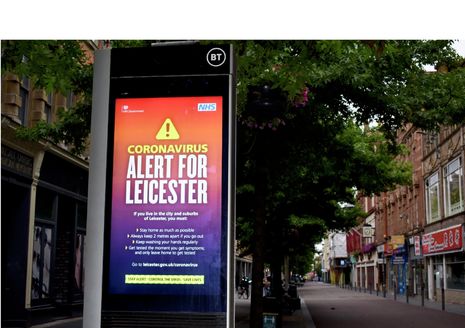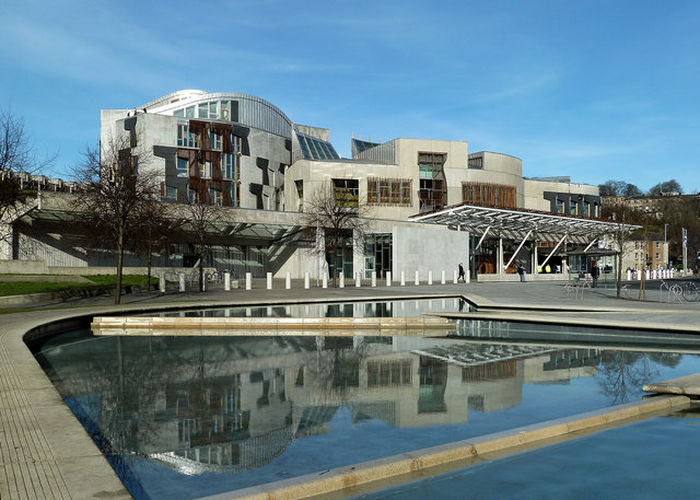If Leicester’s lockdown is the first of many, the whole country has cause for concern
Witnessing it first-hand, Bethan Moss argues that the lockdown in Leicester was badly managed, with unclear messaging and guidance from the central government setting a worrying precedent for local lockdowns.

Despite promises made by the Conservative campaign in the 2019 general election, the towns and cities in the Midlands are ignored still by the new, so-called ‘People’s government.’ The local lockdown recently experienced by Leicester is a direct consequence of such neglect. In the city that I call home, historic underfunding, high levels of child poverty and a governmental communications disaster have been fatal for our most vulnerable inhabitants.
On the 29th June, Leicester was the first area to be placed, unceremoniously, under ‘local lockdown.’ Announced in Parliament at 9pm on a Monday night, there was no Downing Street press briefing, no scientists – there was no chance for journalists or members of the public to question the minister on the details of the decision. The morning afterwards, when the people of Leicester and Leicestershire still had no clarity on which areas were included, or what another lockdown actually entailed, the Prime Minister made a completely unrelated speech about infrastructure.
"Without clear guidance from the central government, our city is paralysed, with residents and businesses in a state of mass anxiety."
I straddle the city-county border, but I am firmly inside the lockdown’s big red line. The decision to lock Leicester down was announced before the government had even decided what they meant by Leicester, which has large suburbs outside the jurisdiction of the City Council. For over 12 hours, a fake map, drawn up digitally with a Public Health England logo superimposed onto it, circulated online, challenged only by a few diligent local journalists. It was even published in The Daily Mail. It wasn’t until the next day that the council produced an official map. However, this came after non-essential businesses on the border had already, unknowingly, dangerously, opened their doors, posing a serious risk of undermining efforts to control the spread of disease locally.
I follow the news as closely as anyone, but two weeks later, I am still unable to discern what the rules of the local lockdown are, or the conditions in which it might end. Mayor Peter Soulsby has been telling us to follow the rules, despite having broken the initial lockdown twice himself to stay with his girlfriend. In the space of a single day, I received an email from the City Council stating that “we are still allowed to meet up to six people outdoors,” and a leaflet from the County Council stating that we should leave home “only for work or essentials (e.g. food shopping, caring for others).” It is impossible to comply with guidance which you don’t understand, and I’m lucky enough to be receiving this contradictory advice in my first language.
The government hasn't told Leicester the conditions it must meet to be released. They haven’t told us how we will be released. They initially announced that the lockdown would be reviewed after 14 days, then 18, but announced changes on 17th July, after 16 days. Even then, Speaker Sir Lindsay Hoyle felt compelled to reprimand the government for delivering their statement to him only one minute prior to the scheduled reading. Matt Hancock extended the city lockdown, but stated that “restrictions now apply only to the Oadby and Wigston area of Leicestershire”, suggesting that much of the county had been released. Yet his department’s spokesperson then briefed that boundary changes wouldn’t come into effect until the 24th. By next day, the government website read that changes would actually come into force from the 18th. If you found all of that confusing to read, imagine having to live through it.
The published legislation still doesn’t line up with guidelines on the government’s own website. Local businesses have explicitly been refused additional furlough support, despite being hard-hit at exactly the same time the rest of the country’s economy was allowed to open up. With insufficient data provided to local authorities and residents, Leicester has been put on the nation’s naughty step, without the government providing the tools it needs to understand its actions.
We don’t know the precise cause of the spike in cases in Leicester. But in a city like ours, which is incredibly diverse and proud of it, Johnson’s lack of clarity has been amplified across languages and generations. Without clear guidance from the central government, our city is paralysed, with residents and businesses in a state of mass anxiety. This is not unique to our city – strings of fumbled communications are characteristic across the government’s coronavirus response. With failings across the board, it is no wonder that ministers no longer appear alongside scientists at daily press briefings.
It’s unlikely that Leicester will be the only area to experience a second lockdown. Although the gap between cases here and elsewhere seems colossal, it is artificially widened by recent testing efforts – even before the local lockdown, residents were encouraged more strongly than elsewhere to get tested. Since the lockdown, door to door testing has been carried out in many areas. At no point during this crisis has the government known exactly how many tests are being carried out, so no data contextualised by tests administered is available. Exclusively using cases per population as a measure for virus spread means that we have no way of knowing for certain the effect that increased testing has had upon the figures.
If the government sticks to the line that they will avoid another national lockdown, then ‘local lockdowns’ could be imposed all over the country where spikes in virus arise, especially if a vaccine is not available by the winter. Leicester’s could well be the first of many mini-lockdowns across the UK. However, if the situation in Leicester does turn into a blueprint for localised virus control, it will be a plan that is almost impossible to follow. And in the words of Liz Kendall, Leicester West MP and Shadow Cabinet Minister: “this virus exploits ambiguity.”
 News / Eight Cambridge researchers awarded €17m in ERC research grants27 December 2025
News / Eight Cambridge researchers awarded €17m in ERC research grants27 December 2025 News / News in Brief: carols, card games, and canine calamities28 December 2025
News / News in Brief: carols, card games, and canine calamities28 December 2025 Interviews / Meet Juan Michel, Cambridge’s multilingual musician29 December 2025
Interviews / Meet Juan Michel, Cambridge’s multilingual musician29 December 2025 Sport / Hard work, heartbreak and hope: international gymnast Maddie Marshall’s journey 29 December 2025
Sport / Hard work, heartbreak and hope: international gymnast Maddie Marshall’s journey 29 December 2025 News / Caius mourns its tree-mendous loss23 December 2025
News / Caius mourns its tree-mendous loss23 December 2025









